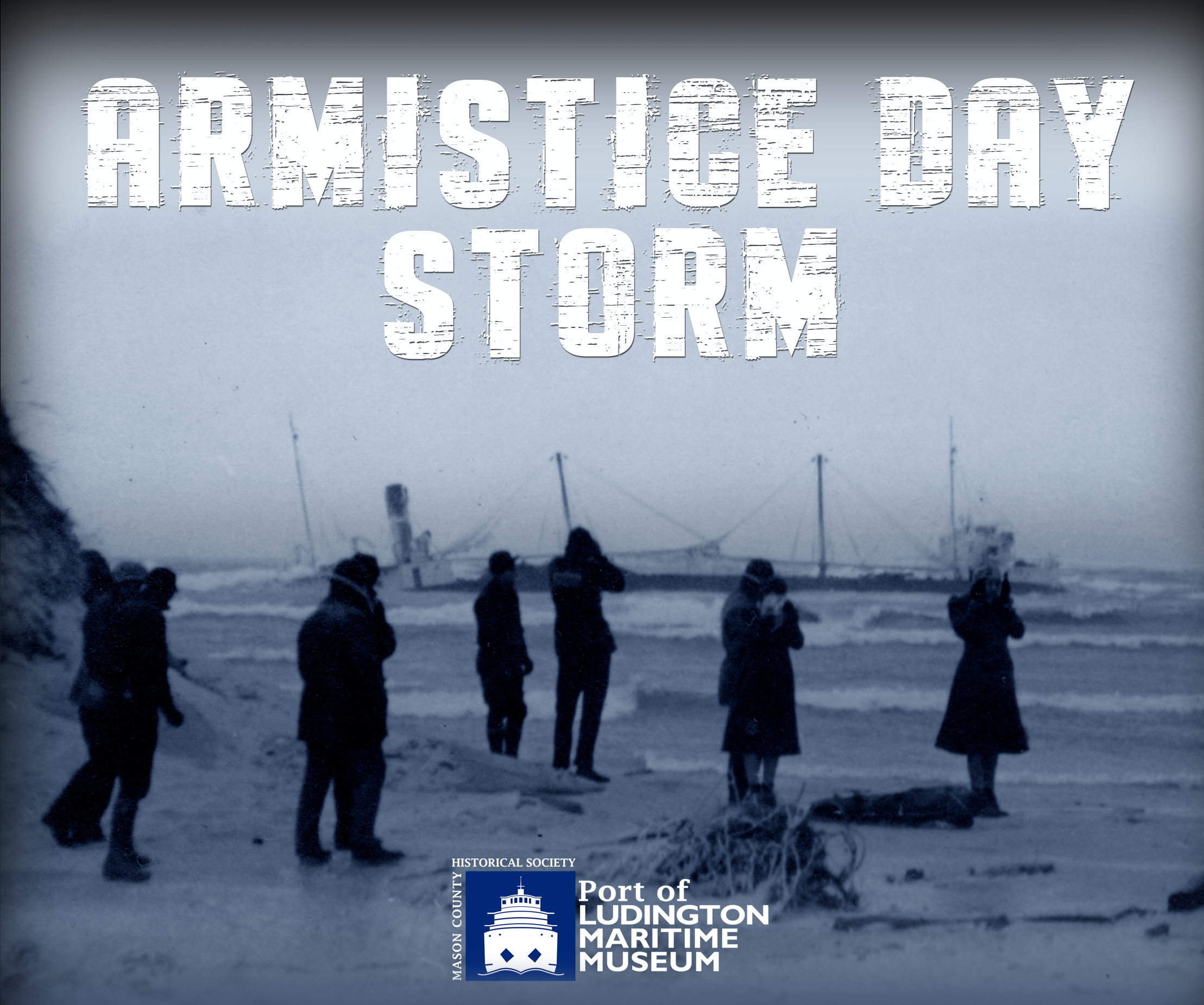
On Armistice Day, November 11, 1940, three storm fronts collided over the Midwest, creating a massive storm that wreaked havoc throughout the upper Midwest area and then struck Lake Michigan. What began as an unseasonably warm autumn day quickly took a turn as temperatures dropped more than 40 degrees in a matter of a couple of hours. Numbing cold, violent winds, and blinding snow caused destruction across open farmlands, dozens of cities, and on the Lake. The storm sped north along Lake Michigan, damaging dozens of vessels and causing its worst destruction between Big and Little Sable Points; grounding the car ferry City of Flint 32 on the beach at Ludington, and sinking three large freighters, the Novadoc, the Anna C. Minch, and the William B. Davock. The Armistice Day Storm, as it became known, took the lives of 154 people, including 64 sailors on Lake Michigan.
This devastating event in the maritime history of Ludington and the Great Lakes is the theme of the museum’s newest exhibit. This highly immersive exhibit will take you back in time to experience the dramatic events of the storm. When you enter the exhibit, 1940s parade music plays as you learn about the many Armistice Day celebrations that were taking place that morning, and visitors are introduced to the various vessels and topics that the exhibit follows throughout the storm. As you progress through the exhibit, the lighting, and the color scheme changes to reflect the sudden and drastic change in weather as you learn the dramatic story of the storm and its many impacts. The end of the exhibit explores the shipwrecks of the vessels that sank in the storm and includes a mockup of a small submarine where visitors can sit and see underwater videos of the shipwrecks.